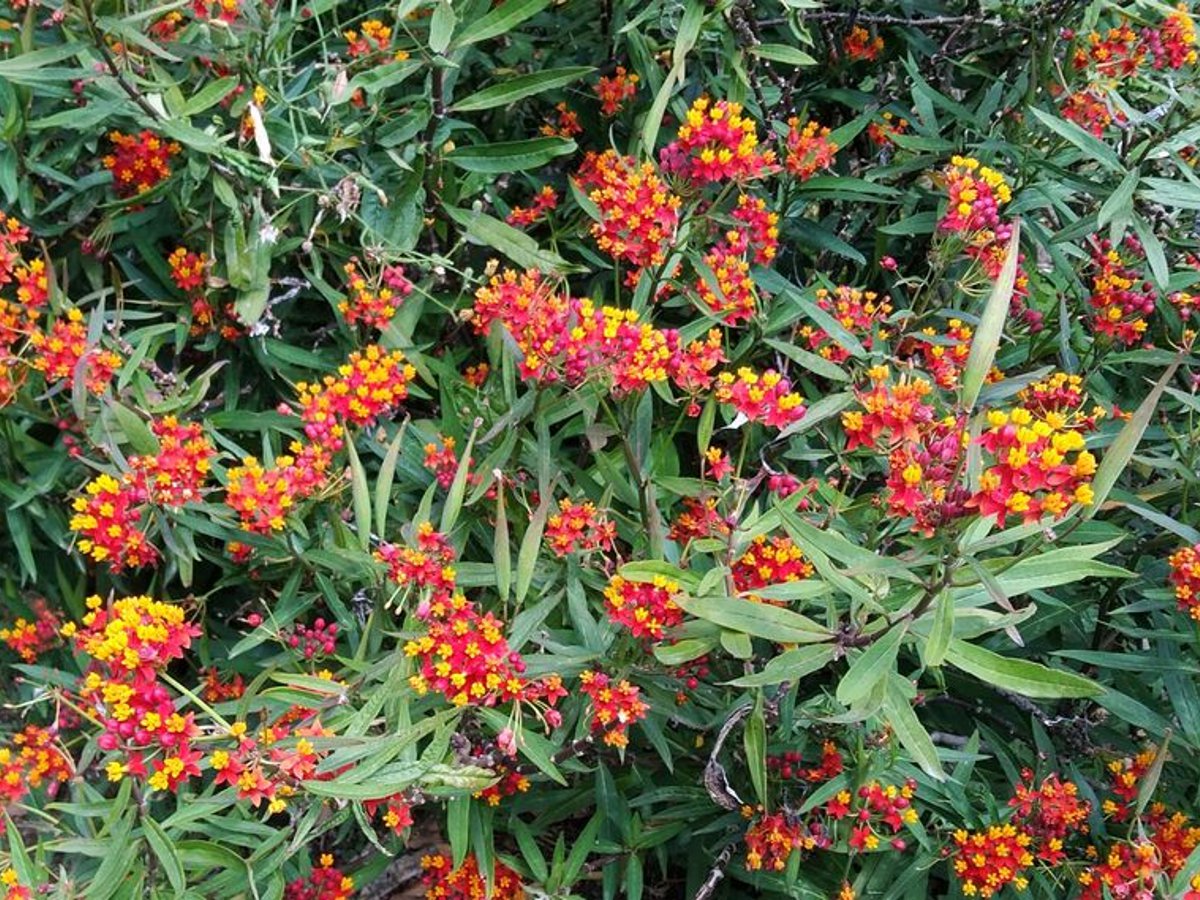Asclepias curassavica
Scientific name: Asclepias curassavica L.
Family: Apocinaceae
Common name: Tropical Milkweed, Mexican Butterfly Weed, Blood Flower
It is a rather herbaceous shrub that can reach up to one meter in height. The stems are erect and grayish tone, as they are slightly tomentose; the leaves are arranged opposite along them, are lanceolate and can reach about 15 cm. They have inflorescences with between 10 and 20 flowers that arise at the end of the stems. The flowers combine the colors red, orange and yellow, so they are also called blood flower or Spanish flag. The fruit is an elongated pod called a follicle; when it opens it releases seeds that have silky hairs, which helps their dispersal through the air.
The species is naturally distributed between Mexico and tropical America, but it is cultivated as an ornamental in almost all temperate and tropical zones of the planet for its showy and prolonged flowering; also because it is attractive to insects, such as bees and butterflies, especially the monarch, which lay their eggs here for the caterpillars to feed on its leaves. Although the sap of asclepias can be toxic, its latex and seed have some medicinal properties, and is used for dental and dermatological problems among other things. In allusion to the medicinal properties of this genus, its name is dedicated to Asklepios, god of medicine and healing in Greek mythology. The name of the species refers to the island of Curaçao, in the Caribbean.
It is a hardy plant, tolerates some drought and grows well in full sun. In La Concepción you can see a group of them next to the four round ponds.

